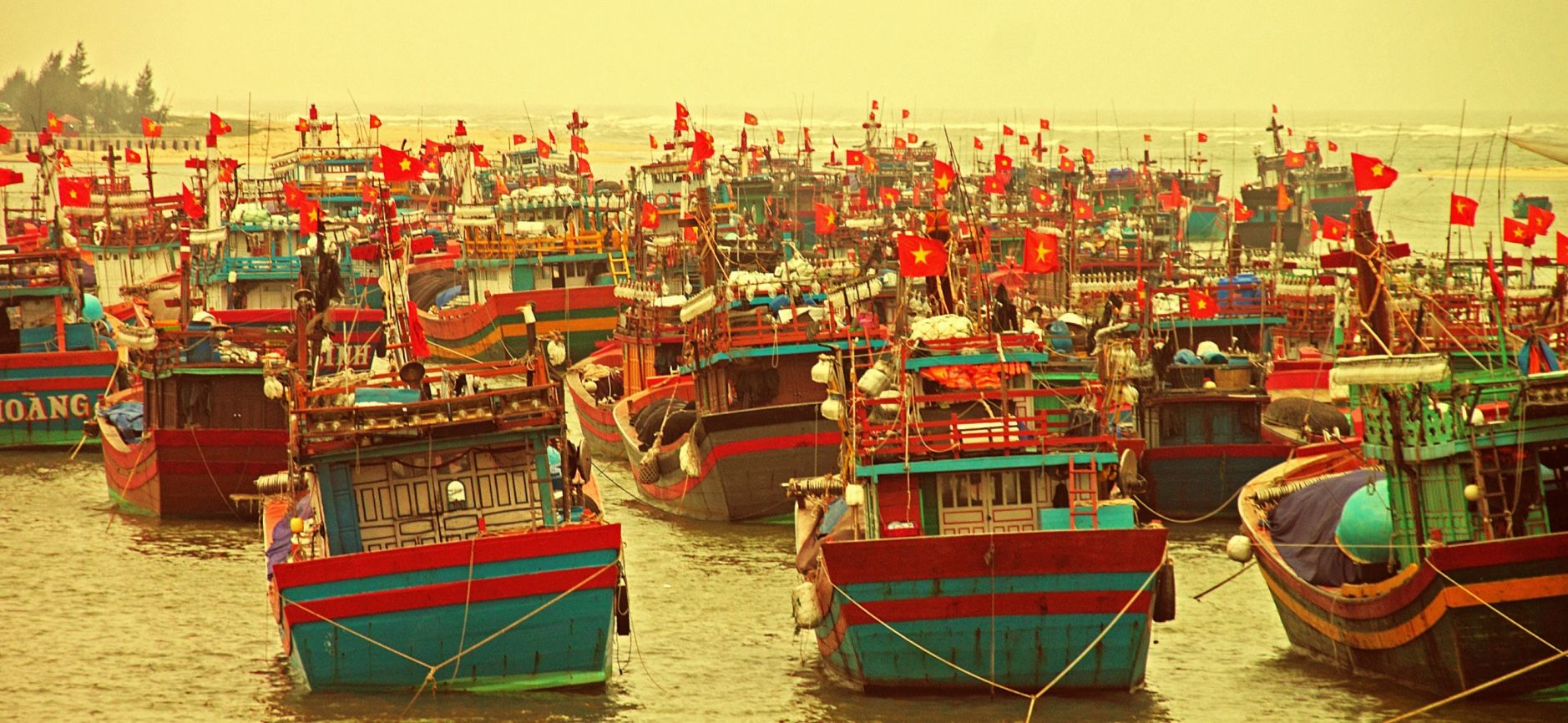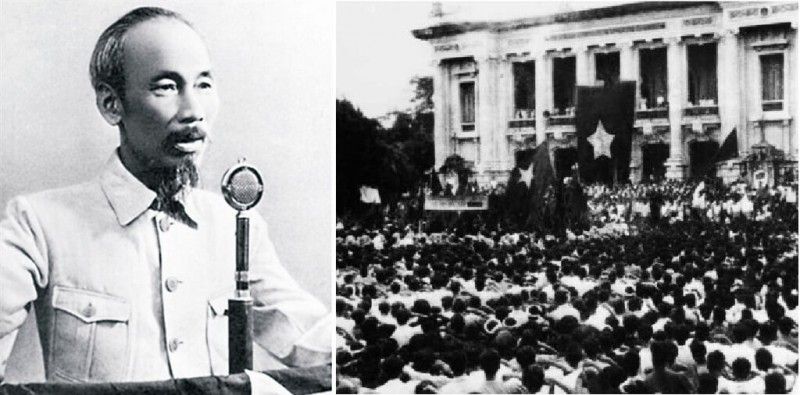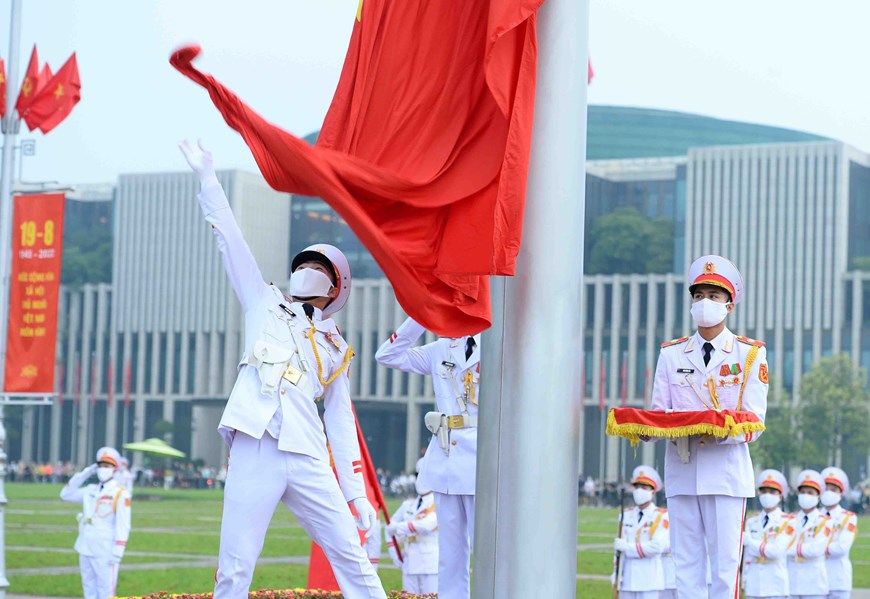VIETNAM FLAG
Vietnam Flag symbolizes a timeless emblem showcasing Unity and Independence of Vietnamese people. The Vietnamese flag, with its striking red background and iconic five-pointed golden star, serves as a powerful symbol of the country’s journey towards independence and unity.
Nguyen Huu Tien designed the Vietnam flag and later a decree signed on September of the 1945 by President Ho Chi Minh to which introduced the national flag of the Democratic Republic of Vietnam with a red background and a five pointed yellow star in the middle. The vibrant red back-ground color of the flag represents the bloodshed and sacrifices made by the Vietnamese people during their struggle for freedom. It symbolizes the indomitable spirit and determination of the nation to overcome challenges and emerge victorious.
The focal point of the Vietnamese Flag is a five-pointed golden star, nestled in the center against the red backdrop. This star holds profound significance, representing the unity of the country’s five social classes – intellectuals, farmers, workers, businessmen, and military personnel. It exemplifies the harmonious collaboration and mutual support required for the nation’s progress. Exploring the symbolism and history behind the Vietnam flag is essential for understanding the cultural point of the country and its people, the 54 groups of ethnic minority that highlights the nation’s resilience and unity, providing valuable insights for readers interested in Vietnam’s rich heritage.
Traveling to Vietnam has never been easier than this. Go for a trip that showcase the country’s best sights, cultures and foods while experience the best and must see places such as → 1. Cu Chi Tunnels 2. Ninh Binh Full-Day Tour from Hanoi to Hoa Lu, Tam Coc 3. Halong bay . Sapa . Mekong Delta and more. Find out a perfect itinerary on Best Vietnam Tours & Trips →
What are the features of the Vietnam flag
The national flag of Vietnam is not just a colorful piece of cloth; it is a powerful symbol that encapsulates the rich history, culture, and aspirations of the Vietnamese people. The general features of the Vietnam flag, exploring the significance of its design and the profound meaning behind its elements.
What do the colors in the Vietnam flag mean? What does the Vietnam flag represent?
Color Palette
The Vietnam flag boasts a vivid combination of red and yellow, two colors deeply rooted in the country’s history and culture. Red represents the bloodshed and sacrifice of the Vietnamese people during their struggle for independence, while yellow symbolizes the prosperity and resilience of the nation.
Design and Dimensions
The flag is rectangular in shape, with a width-to-length ratio of 2:3. The background is dominated by a bold red, signifying the revolutionary spirit that has been at the core of Vietnam’s history. The flag is simple yet impactful, embodying the essence of Vietnamese identity.
Yellow Star Shape
Positioned in the center of the flag is a bright yellow five-pointed star, encapsulated by a circumscribed circle. This iconic symbol represents five classes of society—entrepreneurs, farmers, workers, intellectuals and soldiers representing each point of the star. The flag may also be followed with the flag of the Communist Party of Vietnam.
Historical Evolution
The Vietnam flag has undergone several transformations over the years. Its current design was officially approved by president Ho Chi Minh on November 1955, and it has stood as a symbol of the country’s sovereignty and independence since then. Understanding the historical evolution of the red flag of Vietnam provides valuable insights into Vietnam’s journey as a nation.
Usage and Protocol
The Vietnam flag is proudly displayed in various official and public settings, emphasizing its importance in national identity. The proper handling and usage of the flag are outlined by strict protocols, reflecting the deep respect and reverence the Vietnamese people hold for their national emblem.
Things not to do with the Vietnam’s Flag including disrespecting the National Flag such as writing negative toward the nation’s pride flag, tearing the flag up, stepping on the flag and or using the flag variation.
Where to watch the Flag raising ceremony in Vietnam?
Flag raising ceremony is one of the meaningful experience in Vietnam – the flag raising and lowering ceremonies at Ba Dinh Square in front of the Ho Chi Minh Mausoleum in Hanoi. Indeed, witnessing these ceremonies can be a culturally enriching and patriotic experience. The flag raising ceremony in Ba Dinh square starts around 6AM. Ba Dinh Square is a significant historical site in Vietnam, and it holds great importance in the Vietnamese modern history. The square is named after the Ba Dinh Uprising, a crucial event in the country’s history, and it is often a focal point for national ceremonies and celebrations.
The Ho Chi Minh Mausoleum, located in Ba Dinh Square, is the final resting place of Ho Chi Minh, the founding father of modern Vietnam. The flag-raising and lowering ceremonies usually take place in front of this mausoleum, adding a ceremonial and solemn atmosphere to the experience. For travelers interested in Vietnam’s history and culture, attending these ceremonies can provide a deeper understanding of the country’s patriotic spirit and its reverence for its leaders. It’s recommended to check the schedule in advance, as the ceremonies typically occur daily, but timings may vary.
Overall, Ba Dinh Square and the Ho Chi Minh Mausoleum offer a significant cultural experience, making it a noteworthy stop for those exploring Hanoi and wanting to connect with Vietnam’s rich heritage.
Seven Vietnam Flag towers well-worth to visit
Lung Cu Flag Tower
Lung Cu Flag Tower is nestled in the breathtaking landscapes of Ha Giang, Vietnam, the Flag Tower stands tall and surrounded by majestic mountains and lush greenery, this iconic structure offers not only panoramic views of the region but also a glimpse into the storied past of Vietnam.
The Flag Tower in Ha Giang has deep historical roots, dating back to the French colonial era. Constructed during the 1920s, the tower served as a strategic military outpost, guarding the northern border of Vietnam. Its primary purpose was to assert Vietnamese sovereignty against foreign invaders and to signal warnings in times of danger. Today, the Flag Tower stands as a testament to the resilience and pride of the Vietnamese people.
The architecture of the Lung Cu Flag Tower is a harmonious blend of traditional Vietnamese elements and French colonial design. The structure features a sturdy stone foundation and a tall mast proudly displaying the national flag of Vietnam. The tower’s design reflects the cultural synthesis that occurred during Vietnam’s complex history, making it a unique and compelling landmark.
For those planning to explore the wonders of Ha Giang, a visit to the Lung Cu Flag Tower is a must. The journey to the tower is an adventure in itself, with scenic routes that offer glimpses of Vietnam terraced rice fields, ethnic villages, and the Dong Van Karst Plateau Geopark. Once at the Flag Tower, visitors can immerse themselves in the rich history and natural beauty of the region.
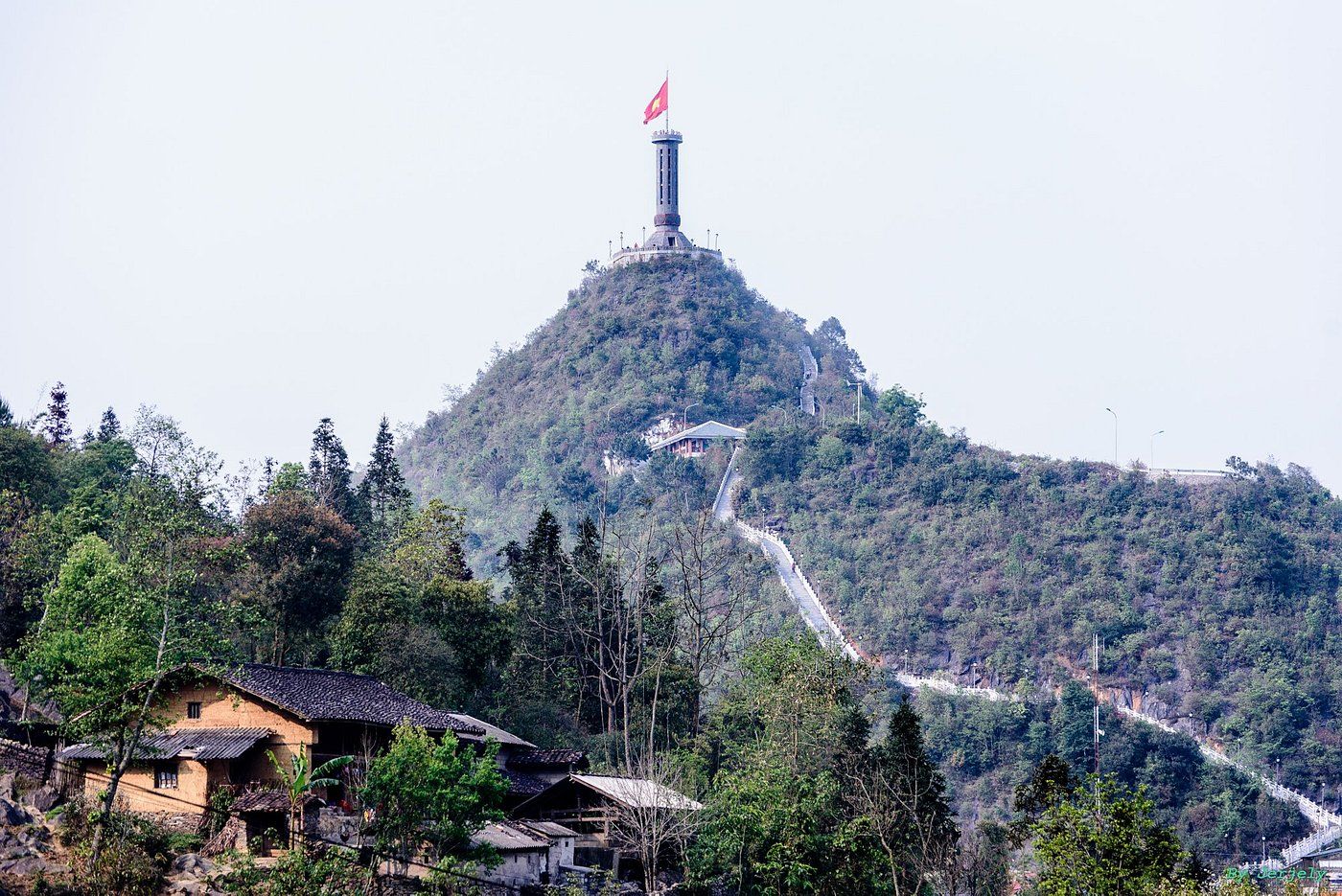
Hanoi Flag tower
In the heart of Vietnam’s Capital, Hanoi, the Flag Tower stands as a silent guardian, the flag tower was built between 1805 and 1812 under the reign of King Gia Long and is over 2 centuries old. As a testimony of history and cultural pride, the Hanoi Vietnam Flag Tower invites locals and tourists to explore the rich tapestry of Vietnam’s past and appreciate the enduring legacy that continues to unfold within its historic walls. Visitors to the Hanoi Flag Tower not only witness a historical monument but also gain panoramic views of the surrounding city from the top platform. The experience is enhanced by informative exhibits and displays that narrate the tower’s history and its role in shaping Vietnam’s destiny. The site is a must-visit for history enthusiasts, architecture aficionados, and anyone eager to delve into the soul of Hanoi.
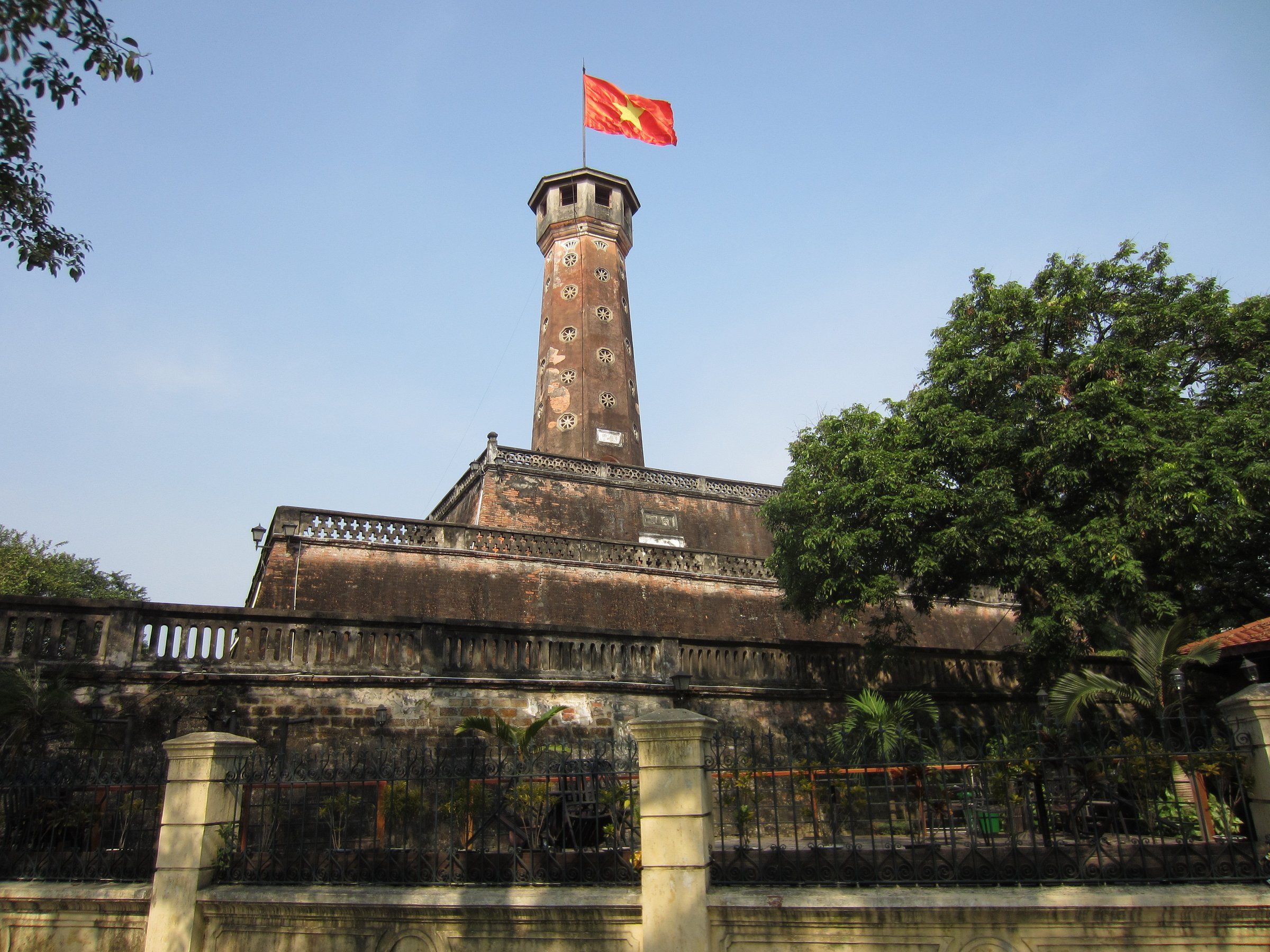
Nam Dinh Flag Tower
Located in the northern province of Nam Dinh, Vietnam. The flag tower stands a testament since 1840 when Nguyen dynasty has erected the iconic landmark, the Nam Dinh flag tower known locally as Cột cờ Nam Định, proudly waves the flag of Vietnam. Its architectural marvel showcases a blend of traditional Vietnam’s northern aesthetics and influences from the Ly Dynasty, reflecting the country’s commitment to preserving its heritage.
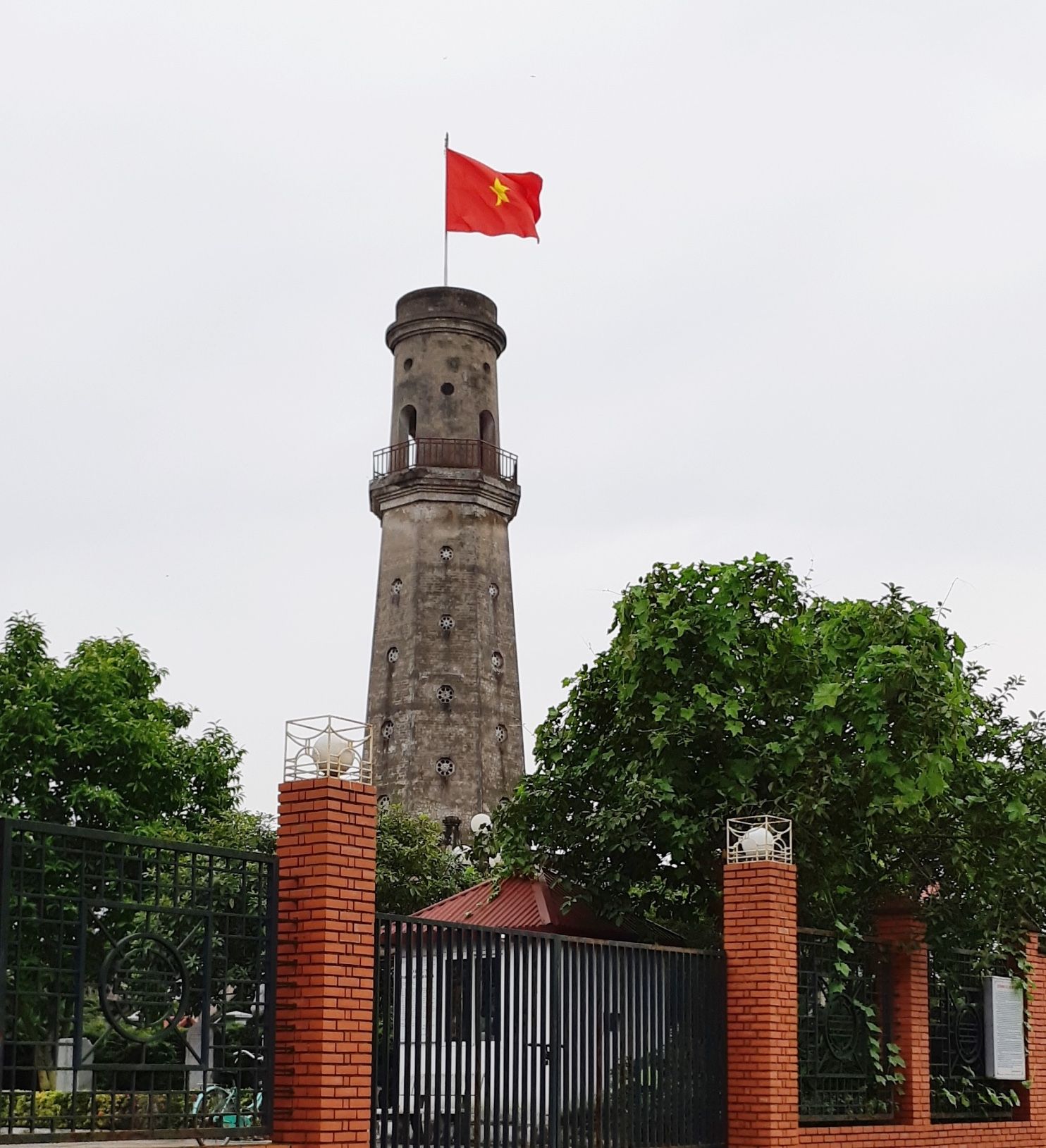
Hien Luong Flag Tower
Among the Vietnam flag towers, the Hien Luong flap tower, a majestic 38-meter structure nestled on the northern bank of the Ben Hai River in Quang Tri, Central Vietnam. This iconic monument holds profound historical significance, serving as a poignant reminder of the country’s resilience and unity during the Vietnam War. Hien Luong Tower stands as a testament to the indomitable spirit of the Vietnamese people, commemorating the historic 17th Parallel, which once divided North and South Vietnam. A visit to Hien Luong Vietnam Flag Tower offers a unique blend of architectural grandeur and historical depth, making it a must-see destination for those seeking a profound connection with Vietnam’s past.
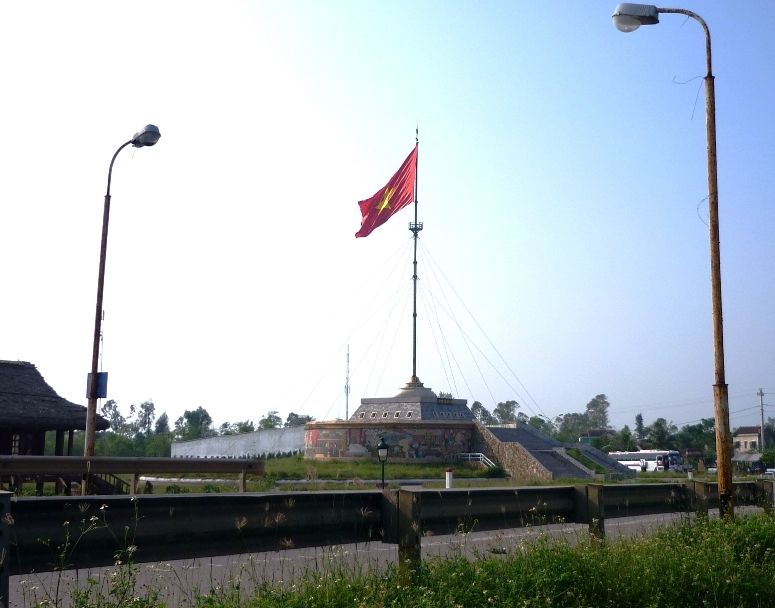
Hue Flag Tower In The Imperial Citadel
The Hue flag tower, situated in the Hue Monuments Complex, holds great historical importance in Vietnam’s history. The Hue flag tower is located on Nam Chanh fortress, positioned between Ngan gate and Quang Duc gate. It is situated in front of the Noon Gate and its part of the Hue’s historic citadel. Construction and Renovations back in the time of Emperor Gia Long initiated the construction of the Hue flag tower in 1807. Subsequent renovations took place in 1829, 1831, and 1840.
This Vietnam flag tower is composed of three flat-top pyramids, each stacked on top of the other in descending order. Purpose of the “Hue flag tower” indicates its primary purpose, which was to serve as the location where the national flag of the Nguyen dynasty was hoisted. The historical and cultural significance of the Hue flag tower is evident in its role as a symbol of the Nguyen dynasty and its contributions to the rich heritage of the Hue Monuments Complex.
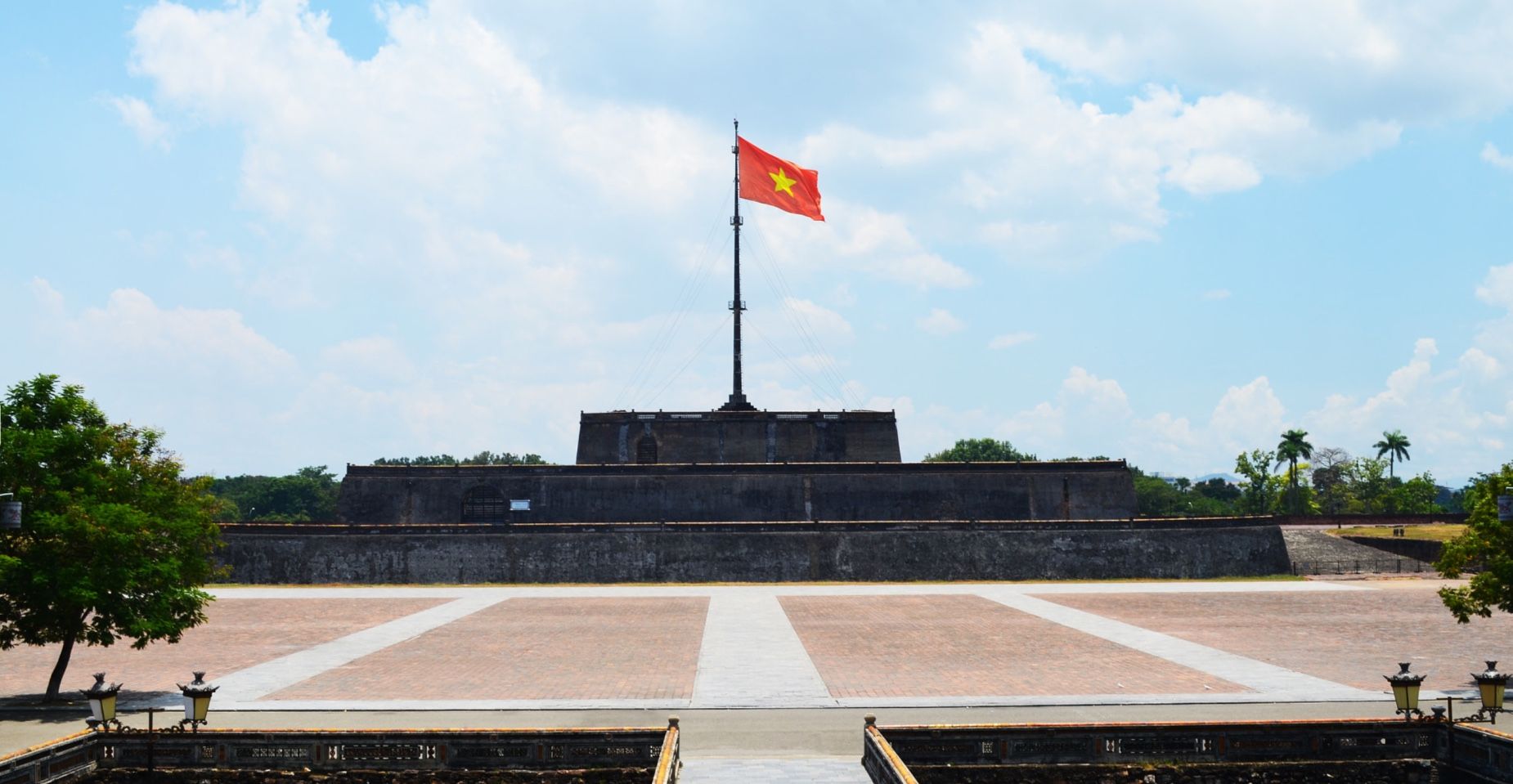
Thu Ngu Flagpole
Thu Ngu Flagpole relic and the efforts being made to promote its cultural and historical values. The “Flag Upper-Lower Flag” Ceremony during the Ho Chi Minh City tourism week in 2022 held as a meaningful event that can attract both locals and tourists.
Today, the flagpole complex is used to organize ceremonies and events not only pays homage to the historical importance of the monument but also serves to educate and engage the public in the rich cultural heritage of Ho Chi Minh City. The inclusion of Thu Ngu Flagpole in the “Creative Cultural Space” program further emphasizes its role as a cultural and creative destination.
By hosting events like these, the city not only preserves its historical landmarks but also boosts tourism and provides an opportunity for people to connect with their heritage. The dates you mentioned, from December 5 to December 26, 2022, indicate a month-long celebration, allowing for an extended period of engagement and participation.
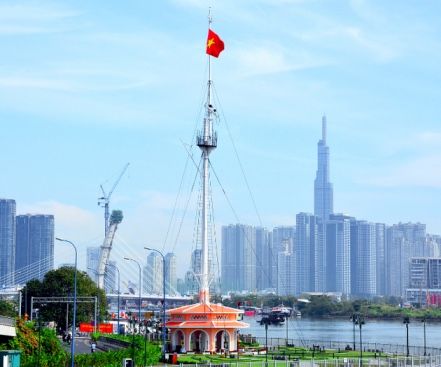
Flag Tower of Ca Mau Cape, Southern tip of Vietnam
Built as a replica of Hanoi Flag Tower in Ca Mau Cape in southern tip of Vietnam and as authorities expect, this flag tower is Vietnam’s southern most attracted tower that is aiming to attract visitors for a memorial visit. The flagpole tower is actually a spotlight of the region, thereby, draw more tourists to the southern tip of Vietnam.
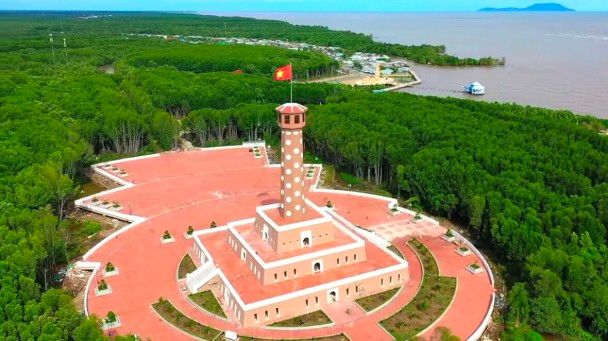
Copyright 2013-2017 Vietnamese Private Tours Ltd With Vietnam Luxury Travel






